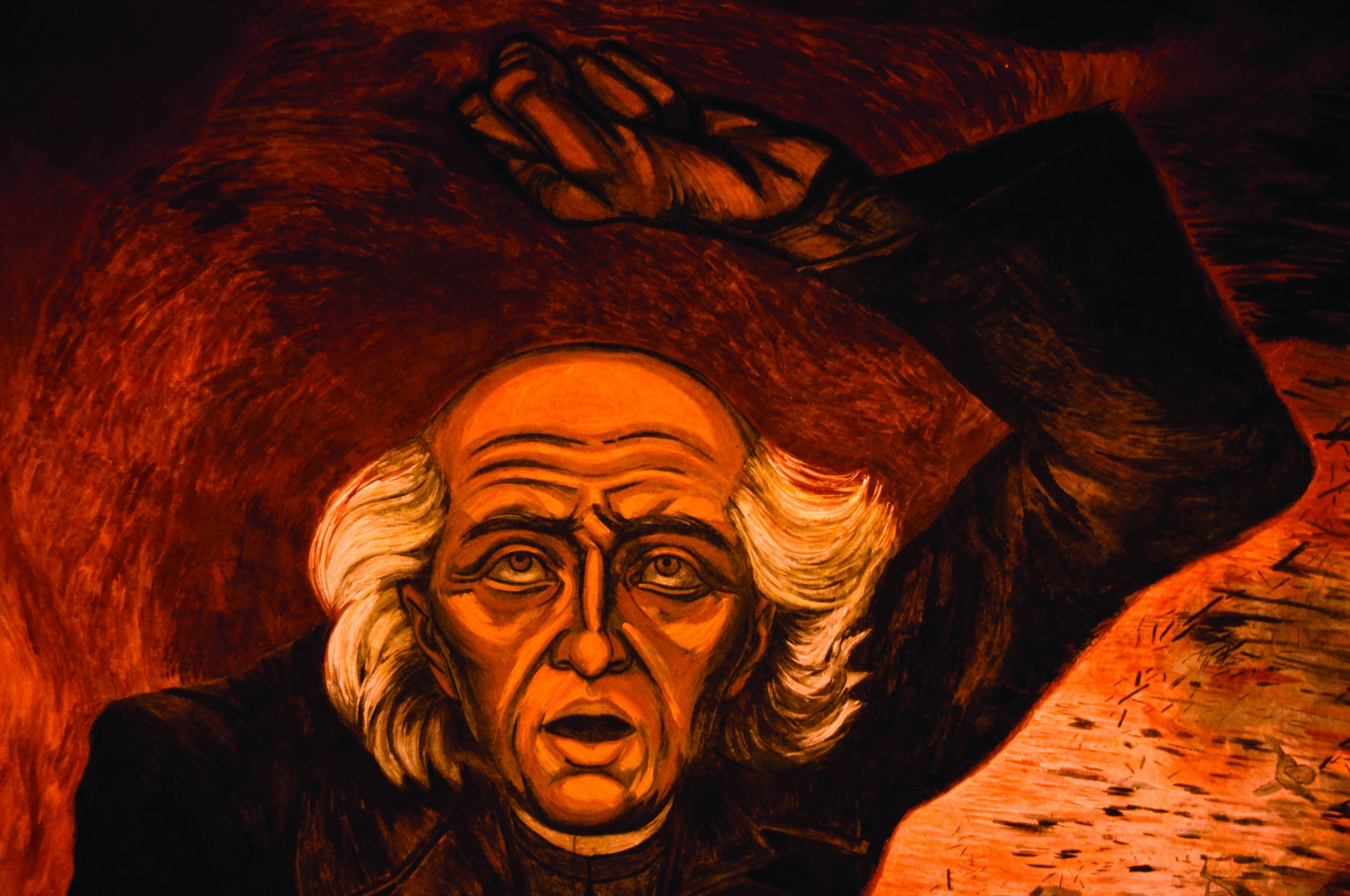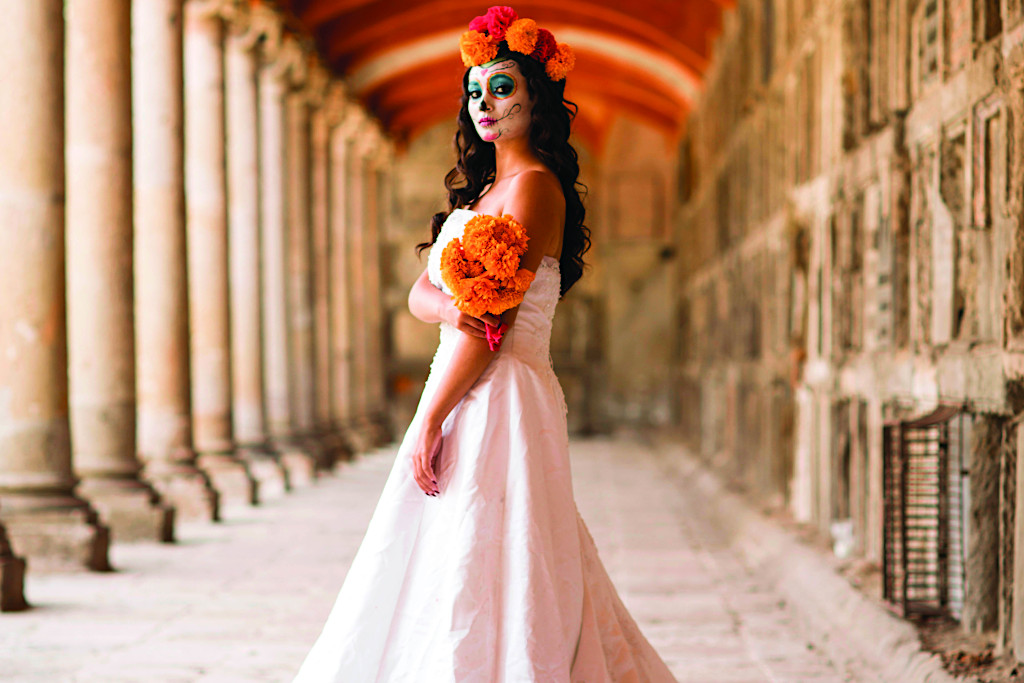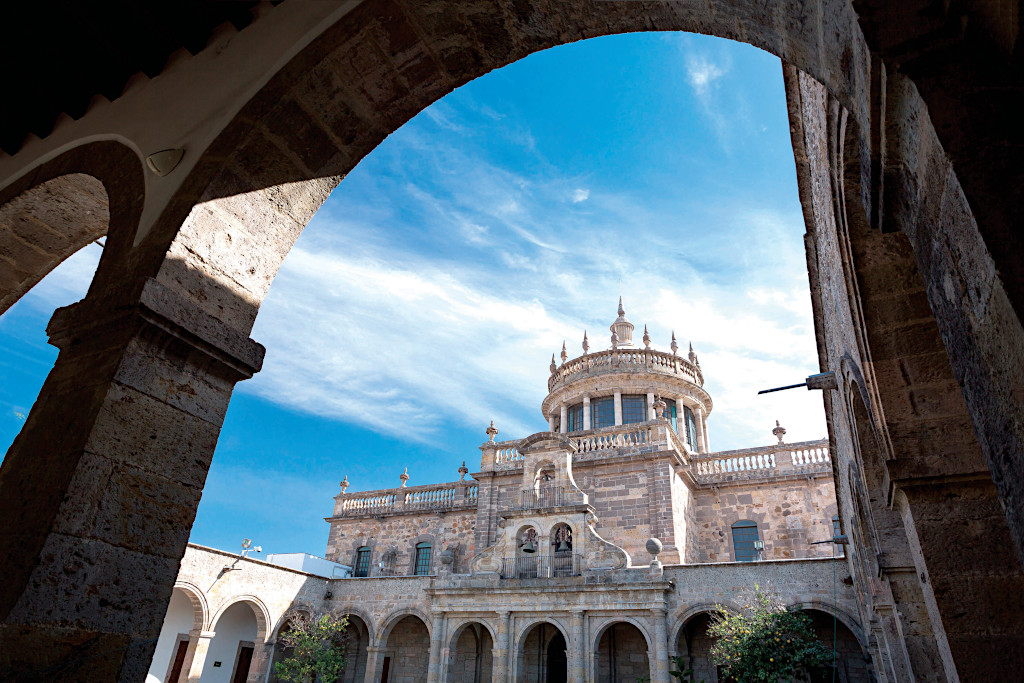My introduction to Guadalajara began with a surprise snapshot of Mexican heritage. It was hot already for midmorning, and I found myself at the Historico Centro, home to the city’s main cluster of attractions. I had arrived early for a walking tour, so I wandered into the Palacio de Gobierno (Government Palace).
The building’s courtyard offered shade and serenity. But just as I found that peace, I turned to find fire and fury in one of Mexico’s most dramatic murals, The People and Its Leaders, by the great José Clemente Orozco. The enormous fresco depicts legendary Mexican independence leader Miguel Hidalgo, torch in hand, lighting the way to liberty. Orozco’s vision tells a story of national pride, emblazoned on public walls like a reminder of Mexicans’ revolutionary conviction.
The vision left me awestruck as I returned outside to the Plaza de Armas. In contrast to the fiery drama of the governmental mural, the town square was feeling festive for the start of Dia de Muertos, or Day of the Dead. All around the plaza stood Las Catrinas, the holiday’s most familiar symbols, each one a skeletal figure, usually female, and finely dressed and decorated with flowers and bright colors. On this day, largerthan- life catrinas surrounded the plaza as tourists and locals snapped photos. Elaborate sidewalk altars to beloved ancestors were arranged with marigolds and candles, and musicians sang and strummed guitars.
This was a perfect introduction to vibrant Guadalajara, Mexico’s second- largest city. It’s the land of traditions like mariachi, jarabe tapatío, and charrería—that is, respectively, Mexican folk music, the region’s famous courtship dance, and Mexican rodeo.
But Guadalajara embraces the modern world, too. It’s a high-tech city that’s been called “Mexico’s Silicon Valley,” has a tantalizing culinary scene, and is seeing innovative modern architecture rise citywide.

“The People and Its Leaders” by Jose Clemente Orozco, at Government Palace of Guadalajara.
Photo: Noradoa
Better still, Guadalajara is a welcoming destination for LGBTQ travelers. The city works with the International Gay and Lesbian Travel Association (iglta.org/Country/Mexico), and it’s also home to the tremendous Guadalajara Pride (guadalajarapride.com) event in June that marches a long route through the city center to Plaza de la Liberación. Pride began here in 1979, making it the oldest in the country, and earning the city comparisons to San Francisco.
In 2019, Guadalajara also hosted the Federation of Gay Games (www.gaygames.org) annual general-assembly meeting. Though the city lost the 2022 Gay Games to Hong Kong, it earned much-deserved attention from global LGBTQ decision-makers, and rightfully claimed its spot as a proud, gay-friendly destination.
Zona Centro, the area just west of Plaza de Armas, is where I found the main cluster of gay bars and clubs, like big busy California’s Bar (Av 8 de Julio 652. Tel: 52-33-1197-5016. facebook.com/pages/Californias-Bar/189637117746524) for dancing, and Cabaret VIP (Calle Galeana 277. Tel: 52-33-1342-2386. facebook.com/cabaretvip) for drag shows and karaoke.
There are several more discos downtown and beyond, in hip neighborhoods like Chapultepec. After 6 P.M., there is one essential stop for any LGBTQ traveler: Tacos Gay (Calle Prisciliano Sánchez 391-A. Tel: 52- 33-1170-9079), a food stand serving the gay village with late-night tacos al pastor and other spicy late-night snacks.

La Catrina in Cemetery
Photo: Jesus Cervantes
As much as I love tacos, Guadalajara serves up another famous dish that I soon found irresistible. Torta ahogado is a “drowned sandwich” typically made of chopped pork on thick, crusty bread, then it’s covered with a ladle full of chili-based red sauce. (Chicken, beans, and cheese also make tasty fillings.) The bread soaks up the savory sauce, and even though these sandwiches are crazy messy, most tapatíos (as Guadalajaran residents are known) still manage to eat them with their hands. I was lucky to find one of the best casual eateries for tortas ahogado near my hotel in Chapalita at Tortas Toño (tortastono.com.mx), a beloved local chain.
At Hotel 1970 Posada (Av. Adolfo López Mateos Sur 1280. Tel: 52-33-3121-2424. www.hilton.com), I got to try more delicious dishes and memorable cocktails at JAL by Hueso. Hueso (Calle Efraín González Luna 2061. Tel: 52-33-3615-7915. huesorestaurant.com) is one of the city’s top restaurants, led by renowned Chef Poncho Cadena. He partnered with Chef Gil Covarrubias to form JAL in the emerging Chapalita neighborhood, about a 15-minute cab ride southwest of Zona Centro. The menu centers on traditional Mexican and international dishes made with local ingredients, including its standout pork stew, which tastes even better alongside a black margarita, made with earthy charcoal liqueur.


